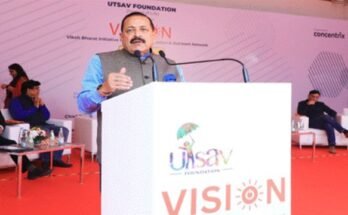Chennai : Apart from IT workers, a whole set of other skilled workers — from market research analysts to financial advisors, web developers, teachers, artists, medicos and paramedics — might see their dreams of moving to the US never bear fruition. With most of them drawing salaries between the $60,000 to $100,000 cap, a new bill proposed by Congress is likely to affect these workers just as much as it hurts the IT industry.
Skilled employment in the US is back in the limelight, after US Congressmen reintroduced a bill last week that has upped the ante for H1B visas. The bill has raised the benchmark from $60,000 to a minimum of $100,000 to be able to work in America. It also seeks to remove a master’s degree exemption that currently exists. Unlike popular perception that ties H1B visas with the IT industry, industry observers said that there are a lot of non-IT workers too, who are going to be impacted by this move.
“I’ve had several Montessori and high school teachers asking me how such a cap can be met. IT professionals can easily meet this threshold but teachers and lecturers are paid much less. The American education system relies heavily on sourcing teachers from other countries. They need to consider other sector impacts as well,” said Anu Peshawari, immigration lawyer at Anu Attorney Law Firm.
When Shravya Jain, 29, got her H1B visa it felt like she had won a lottery. And the US system for handing out work visa for student immigrants works pretty much like a lottery system — something that could get tougher given the Congress’ recent move and President-elect Trump’s anti-immigrant rhetoric.
Students studying in the US get two rounds of interview. Jain had a tough one year soon after she passed out of Colombia University of Journalism, New York. “I was on a F1 student visa and companies had internal rules against hiring candidates like me. Even if their internal policy did not forbid it, they were not keen to be hiring an outsider given the current political climate,” said Jain, who works as an associate with advocacy agency Climate Nexus, which sponsored her visa during a six-month fellowship programme.
Chances of a visa go-ahead also depends on the skill set being applied for. When a qualified nurse Anita Mary, applied to the US, she did so to continue her spiritual work. She had received a sponsorship from a non-profit organization in Los Angeles, despite which her visa application got rejected. “When my application for rejected I was told I would have had a higher chance of acceptance if I had tried to go the US as a nurse. The US apparently has a shortage of skilled nurses,” said Mary.
Immigration lawyers said that the new measures would force more people to try visas under other routes such as L1 – if they were qualified and EB5 – if they had the money. “People will also try under the O1 category, which is in recognition of people with extraordinary talent in the field of arts, music, education, science, sports, etc,” said Peshawaria.
Mark Davies, an immigrant lawyer who works both in the US and UK, said that there were a lot of his clients who have been applying for visas under L1 and EB5. “We have clients in different sectors; in manufacturing, management consultancy, trucks, logistics, restaurants, hotels, the medical industry, medical testing, even insurance,” said Davies.
Davies said that there are multiple factors that go into why certain people get selected in certain visa categories. “EB5 visa route is the easiest route to get processed, provided you have the money. An L1 visa means you’d have to show merit – For instance, I’ve helped talented Indian chefs through their visa applications,” he said.
Lawyers said that the Trump regime might affect skilled workers, but not highly-skilled workers or potential investors with deep pockets. “Trump welcomes investments coming to the US. He has always been viewed as being friendly to the business community,” said Peshawaria.
Note: News shared for public awareness with reference from the information provided at online news portals.



